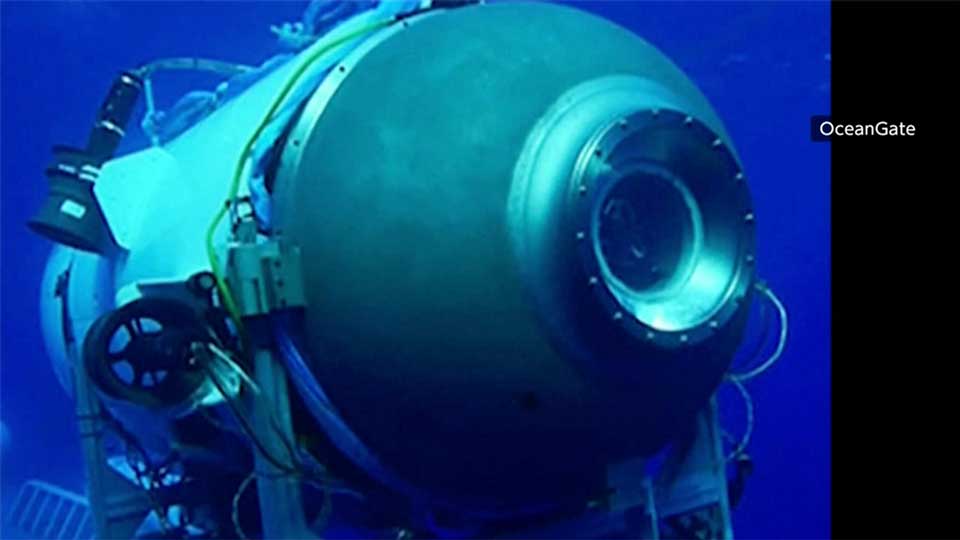The US Coast Guard says a deep-sea vehicle found five "major" pieces they believe are from the submersible. The pieces are about 500 meters away from the wreckage of the Titanic, which the craft had set out to explore.

The Coast Guard said the location of the "debris field" in the North Atlantic matches the area where communication with the submersible was lost.
"The debris is consistent with a catastrophic loss of the pressure chamber," said US Coast Guard First District Commander John Mauger. "Upon this determination, we immediately notified the families."

Search teams had been racing to find the vessel that lost contact about 1 hour and 45 minutes into its dive, hoping that the craft was intact and the crew still alive.
There was a glimmer of hope during the search when sounds were detected underwater that could have been from the vessel. But their origin ultimately could not be determined and no other sounds were heard during the search, suggesting that the submersible may have been destroyed before search operations even began.
Mauger said crews will continue working as they try to come up with a detailed timeline of the incident.
Wall Street Journal: US Navy detected possible submersible implosion
The Wall Street Journal reported on Thursday that the US Navy had detected a sound consistent with an implosion shortly after contact was lost with the submersible.
The Navy started to search immediately after communication with the craft went dark. The sound was detected near the site where the debris was found, and a senior US Navy official said that although it was inconclusive, the information was immediately shared with the commander conducting the search operation.
Expert: Possible metal fatigue in craft hull

Professor Yamada Yoshihiko, an oceanography expert at Tokai University, believes that metal fatigue could have played a role in the craft's demise. He says three years had passed since the submersible was built, and it's possible that there was metal fatigue in the hull. He says water could have seeped in through the viewport, which was widely believed to be a weak point, causing the lithium battery system to catch fire.

He added that the most important thing is to recover as much of the vessel as possible to try and determine the cause of the tragedy.
